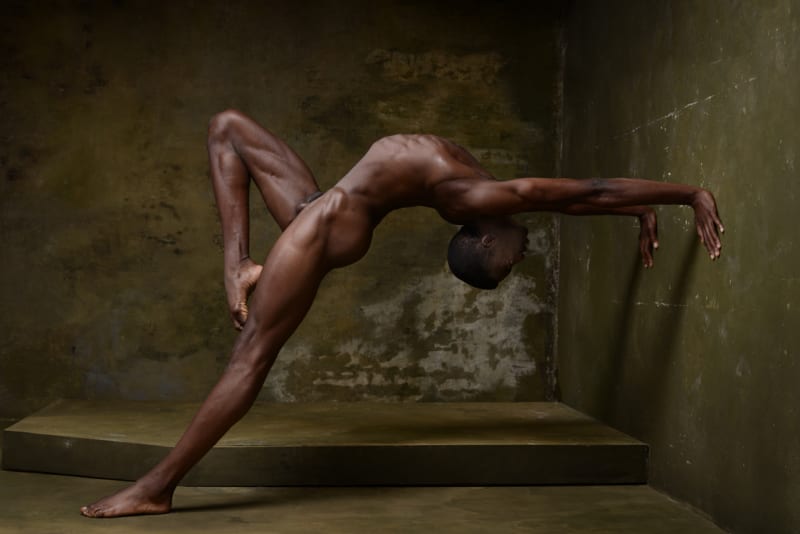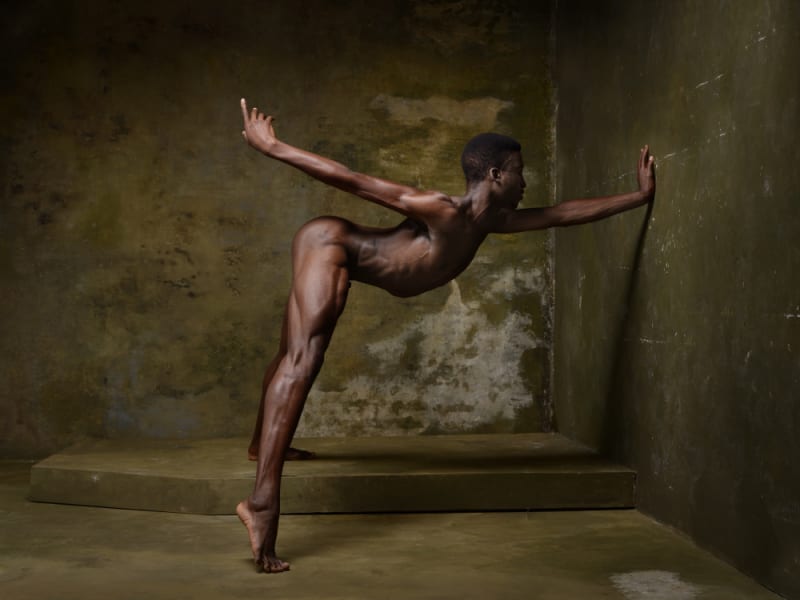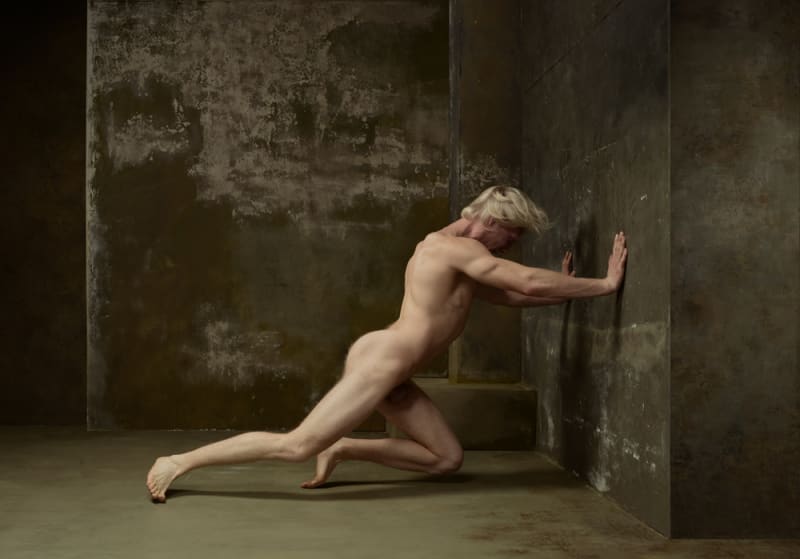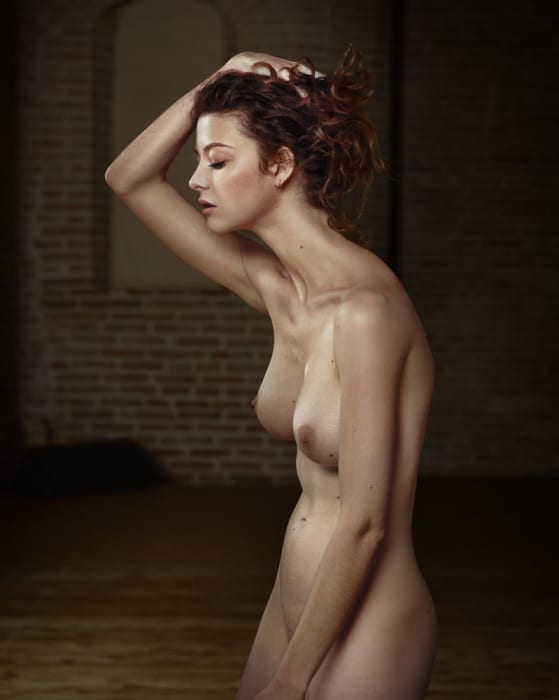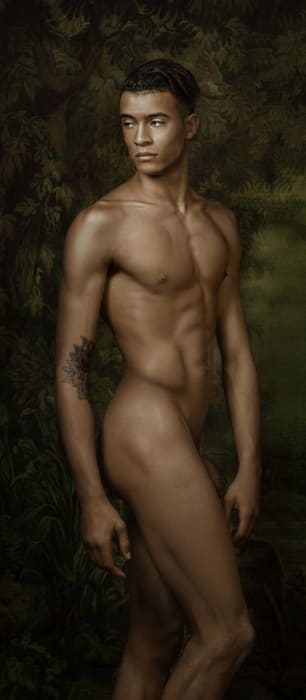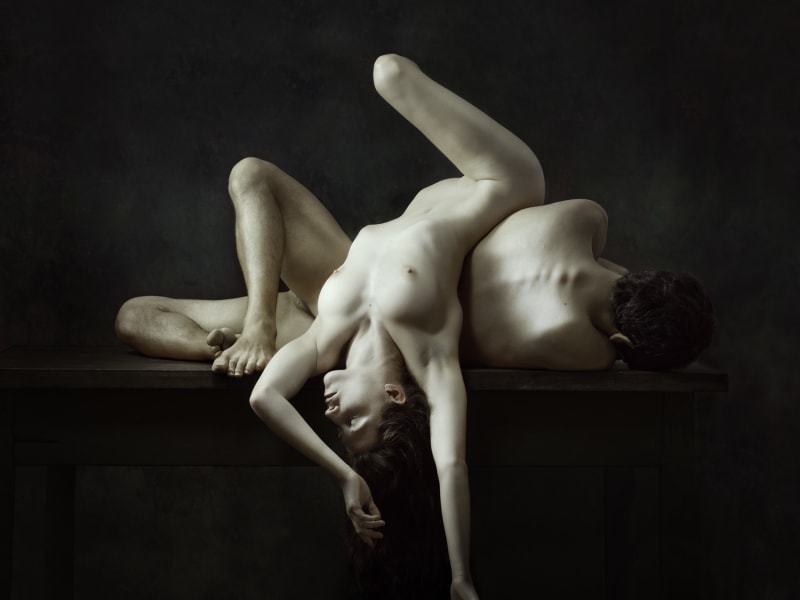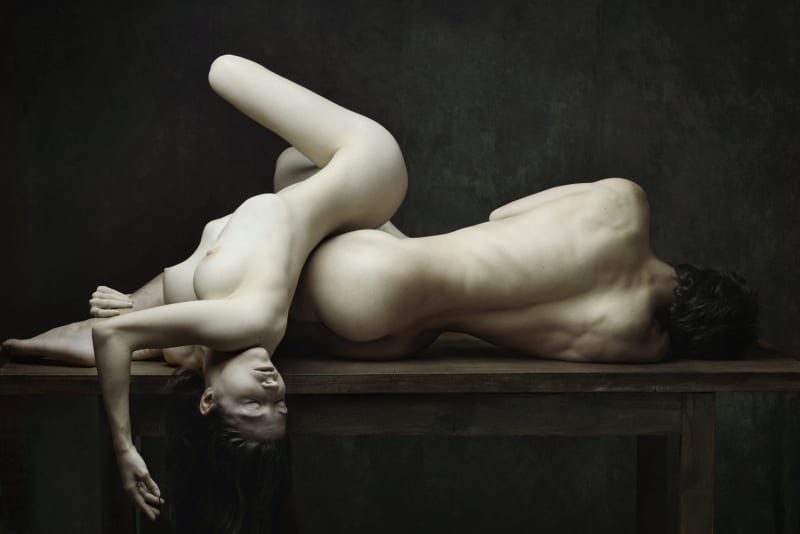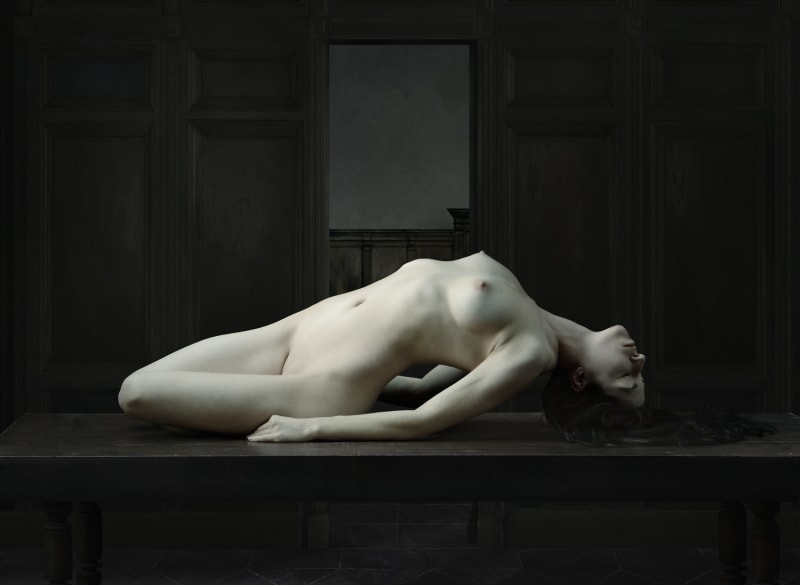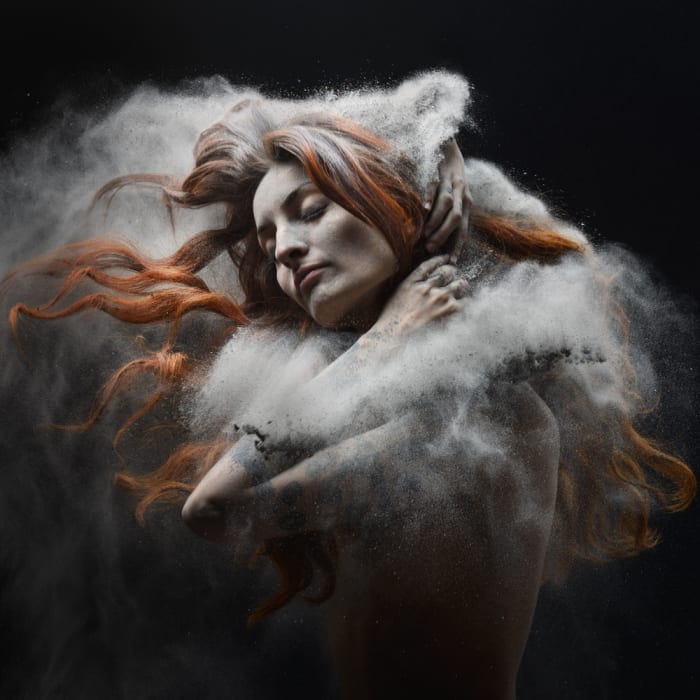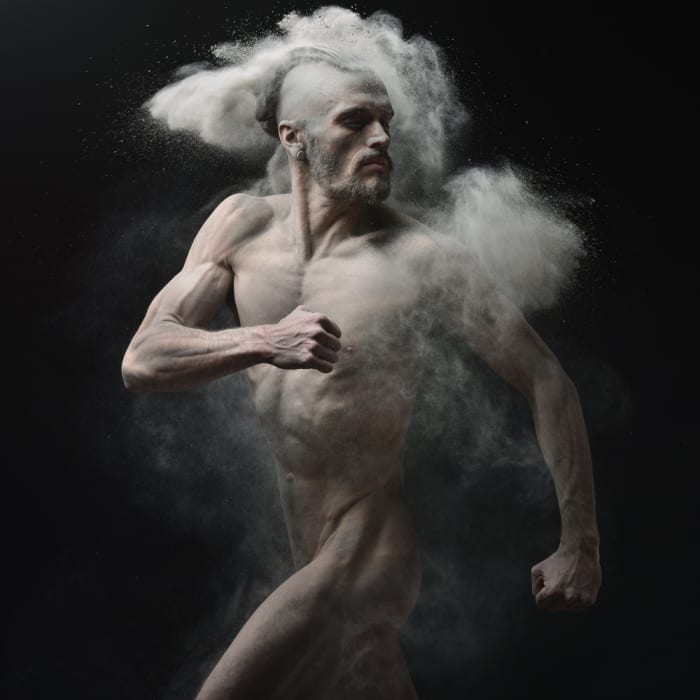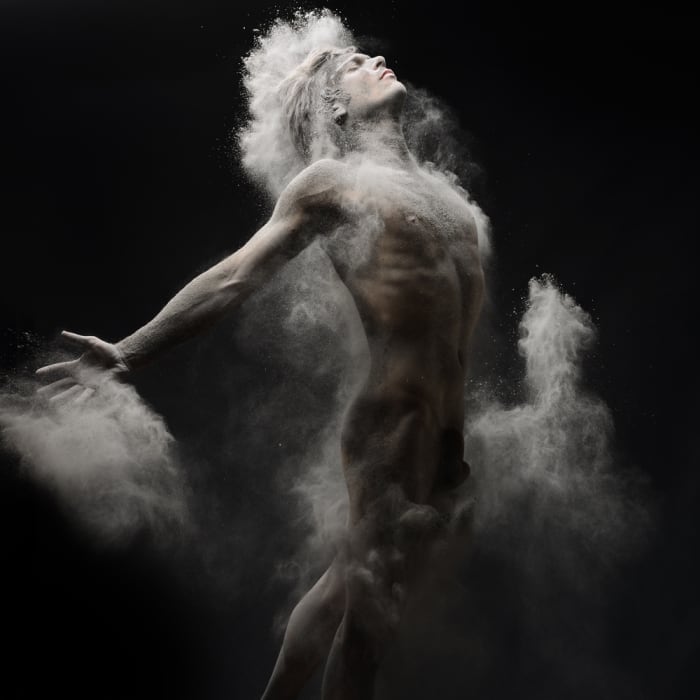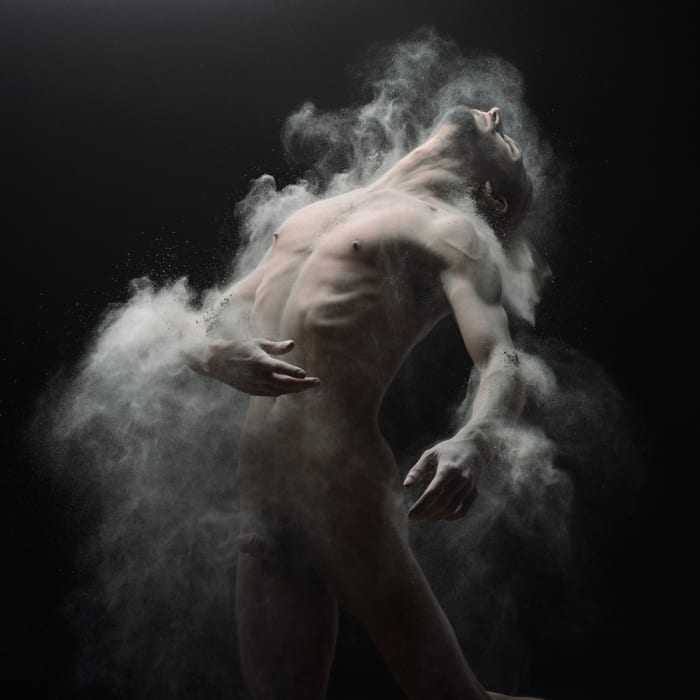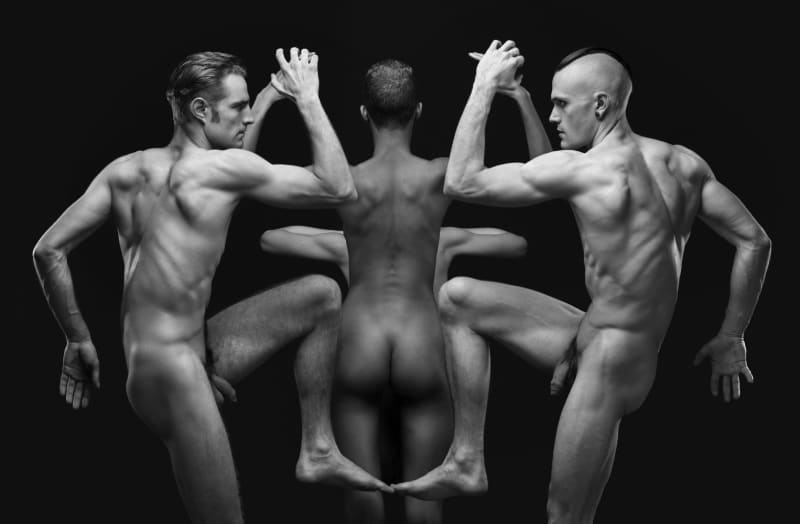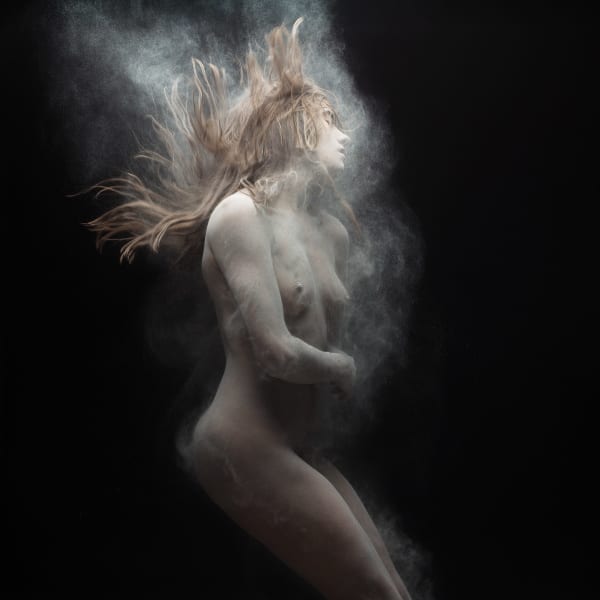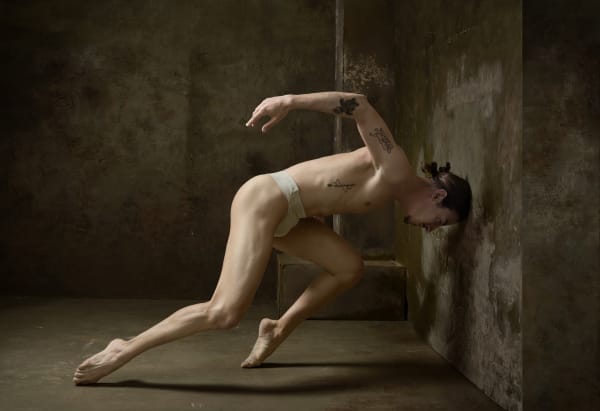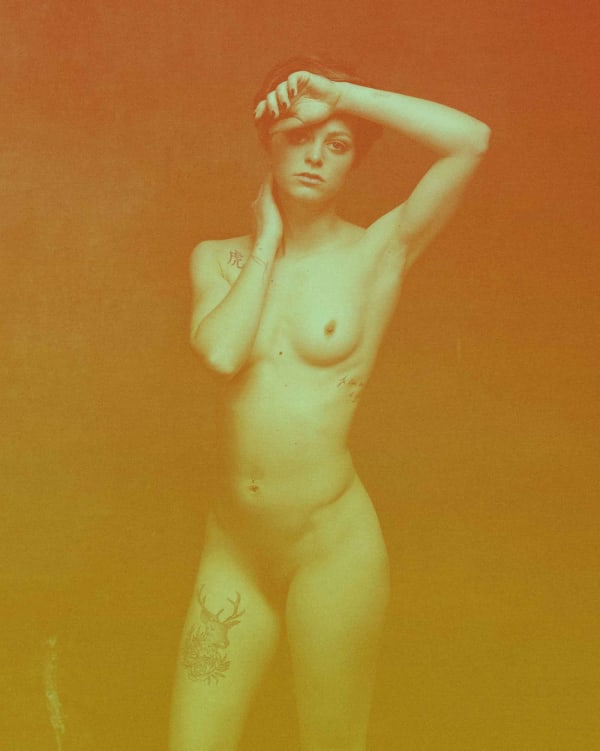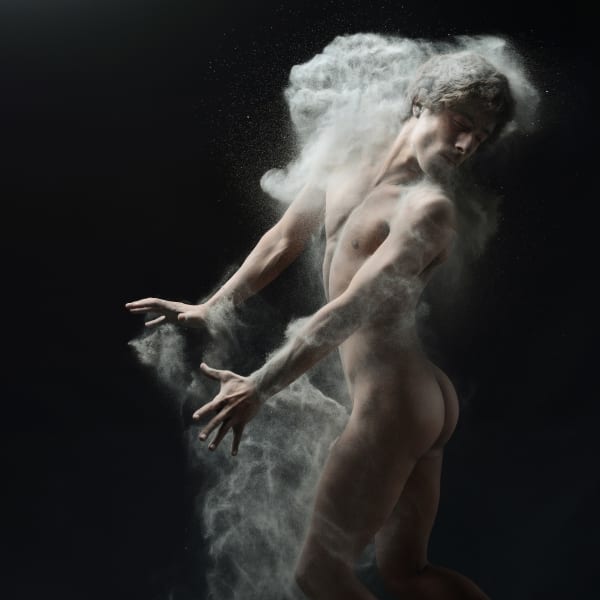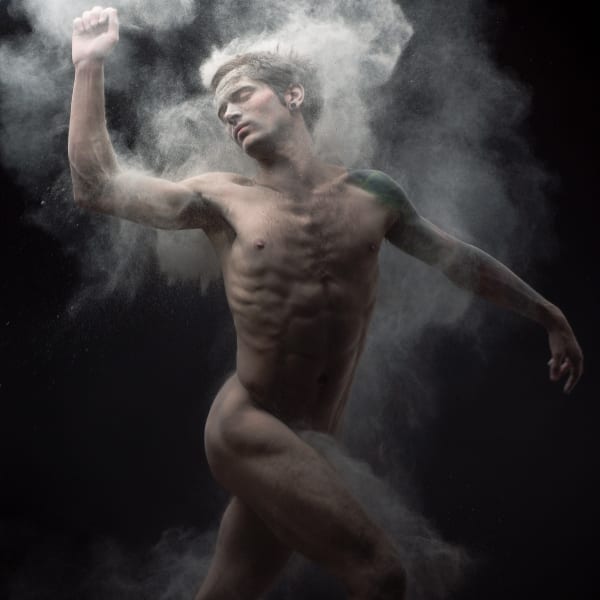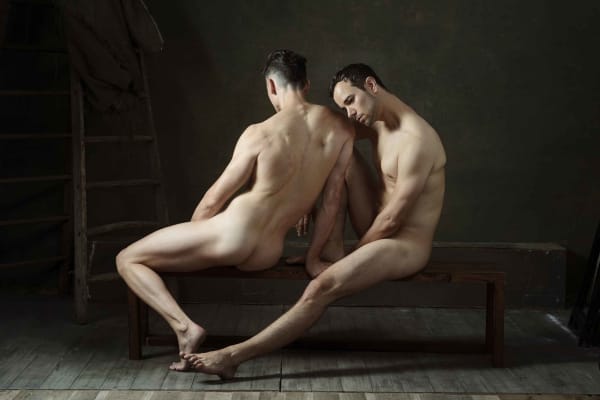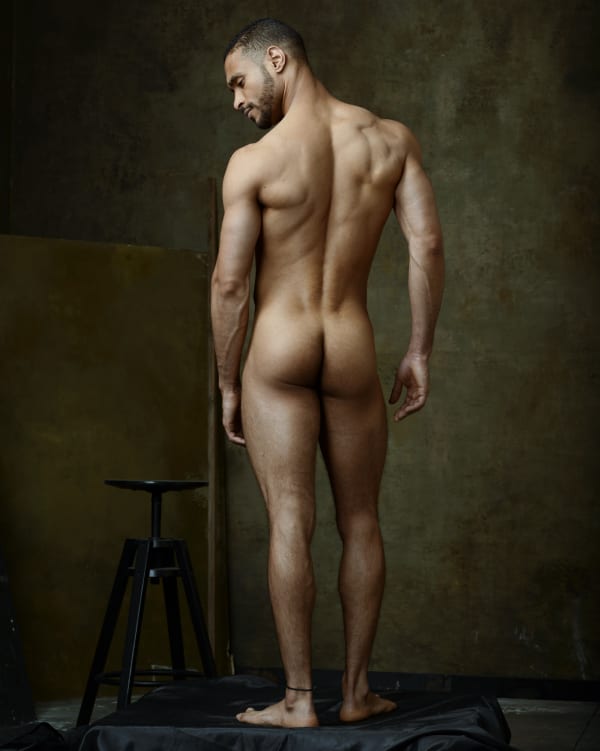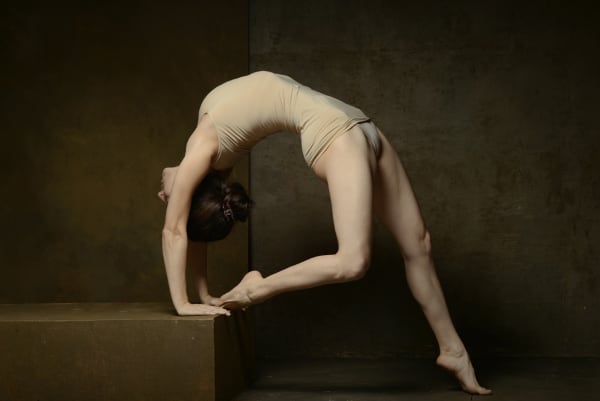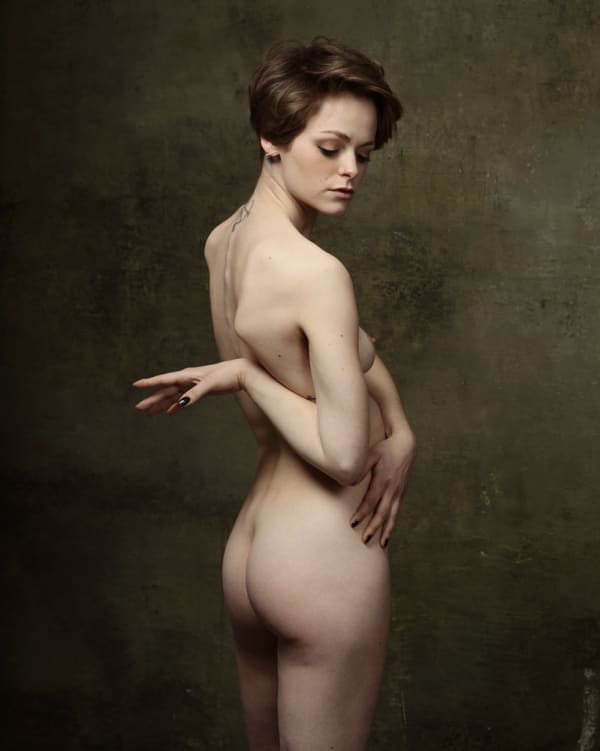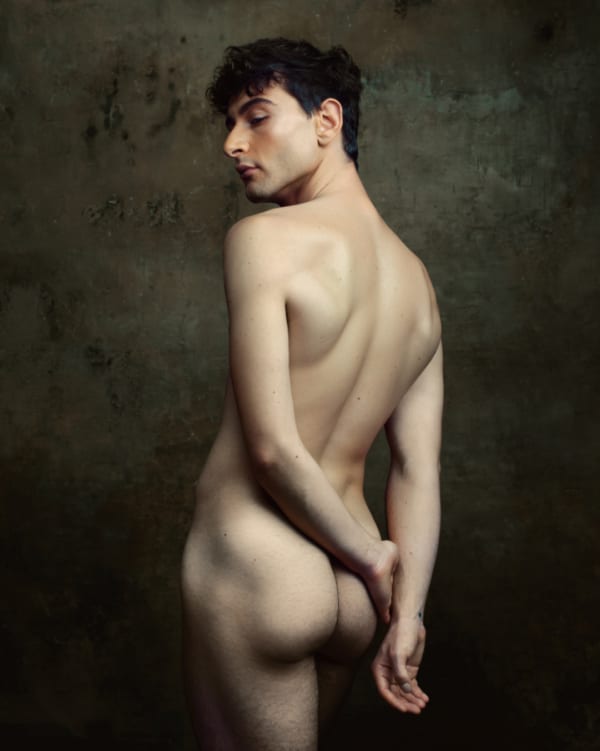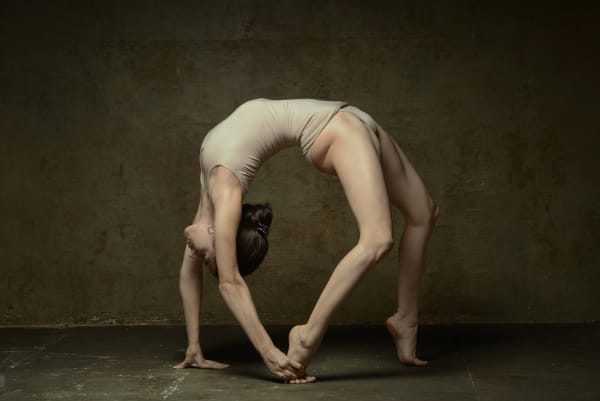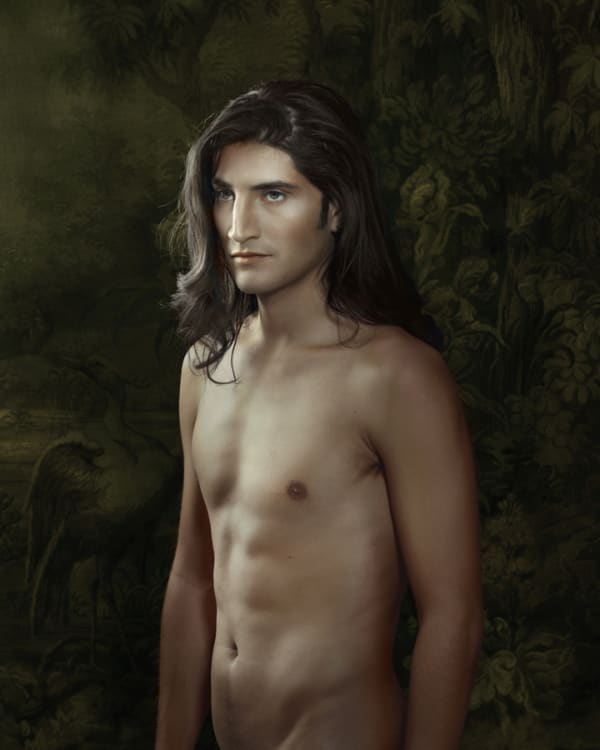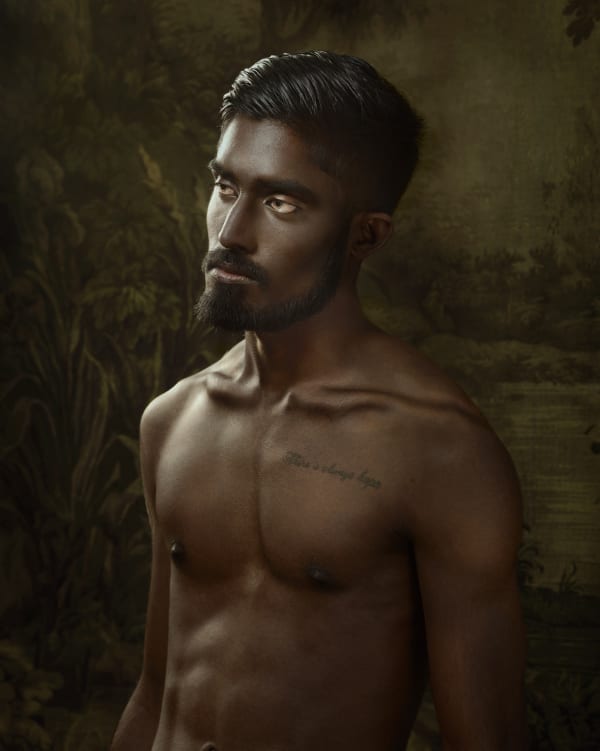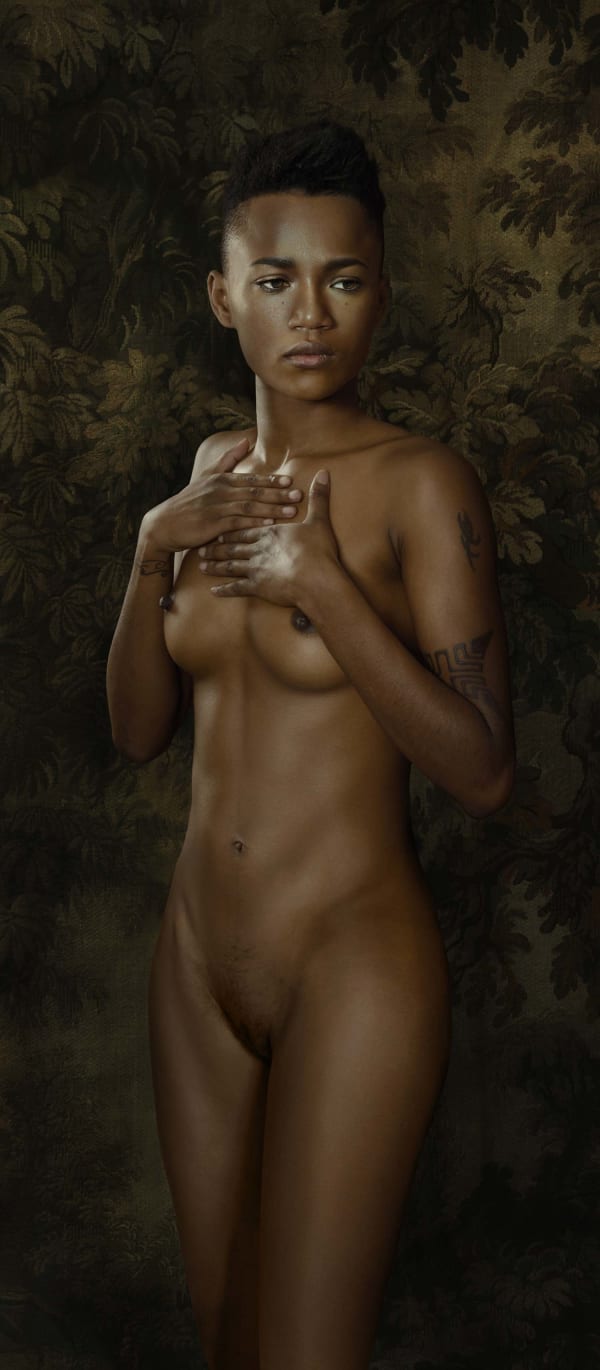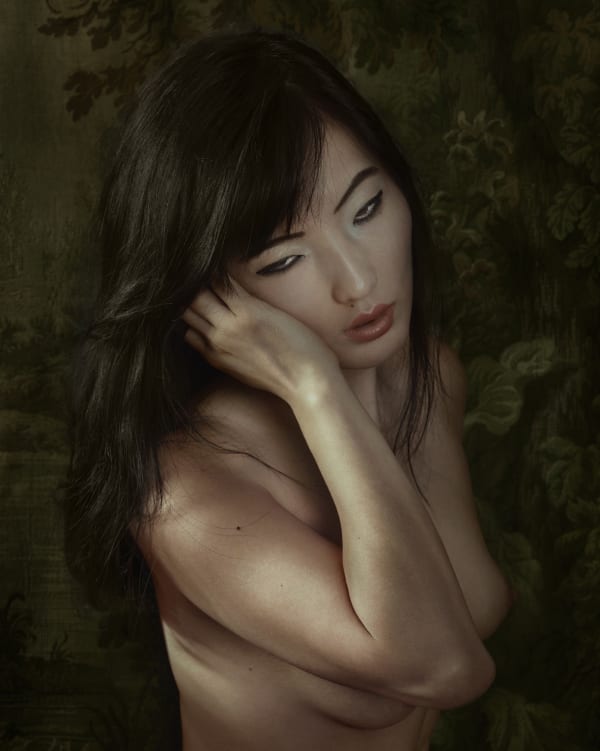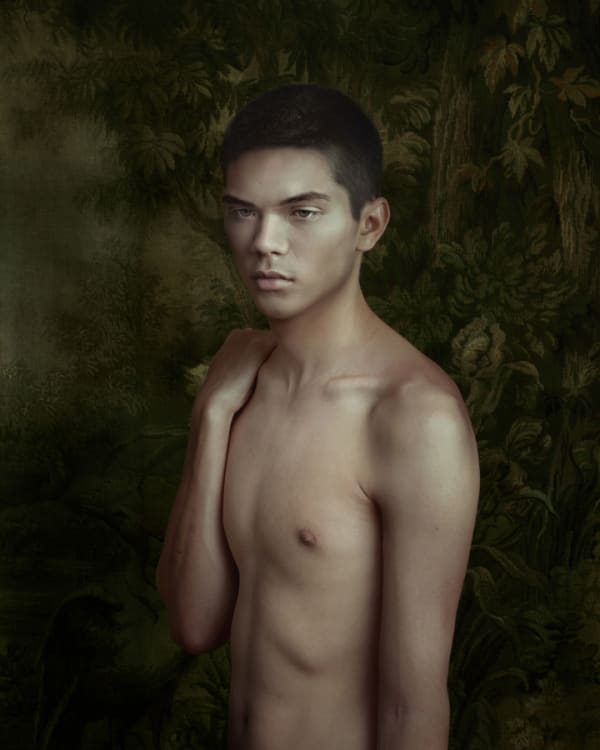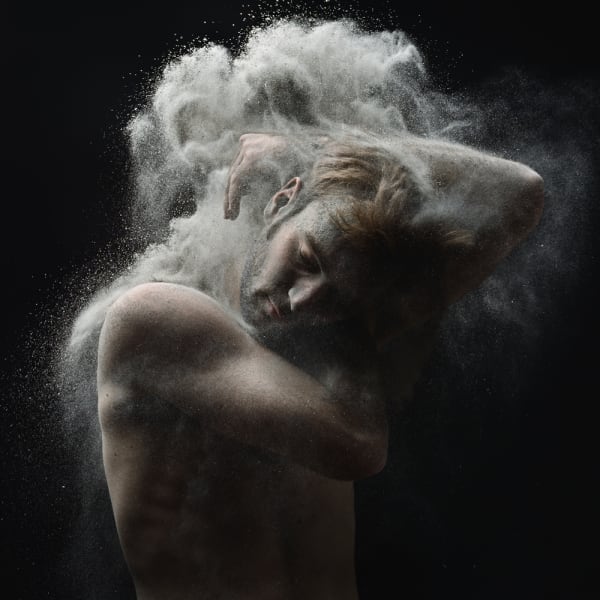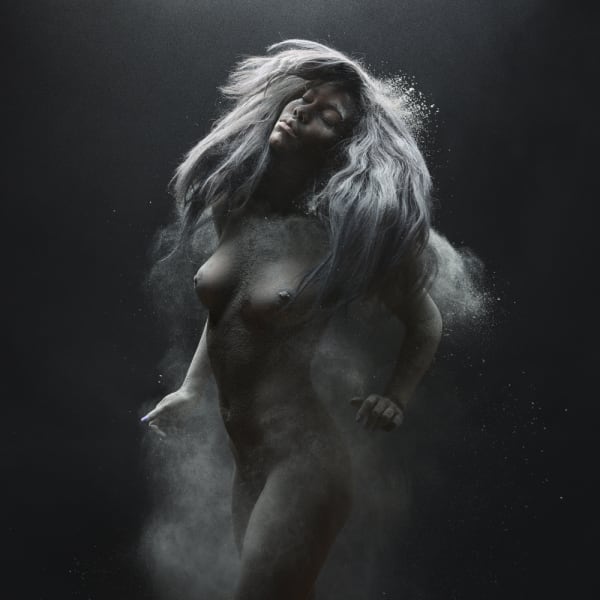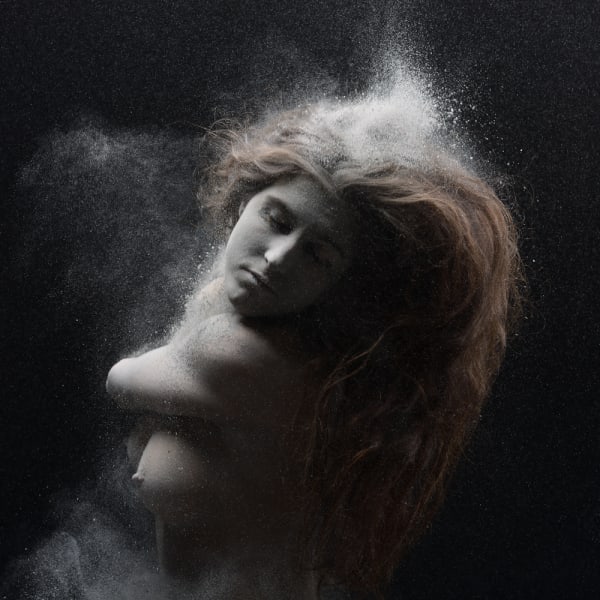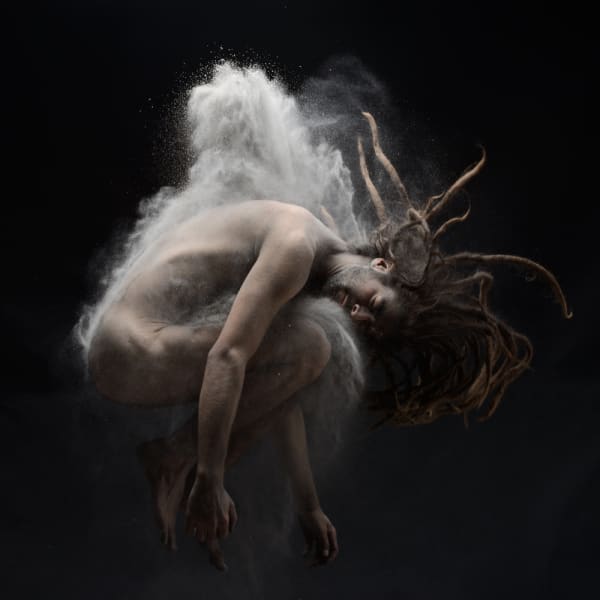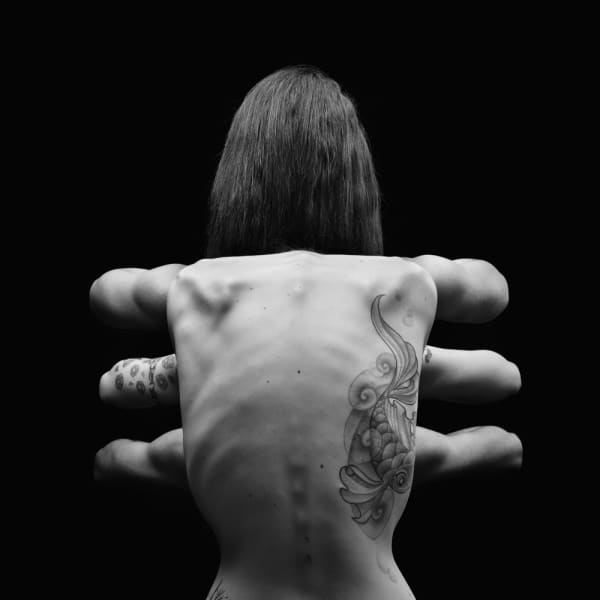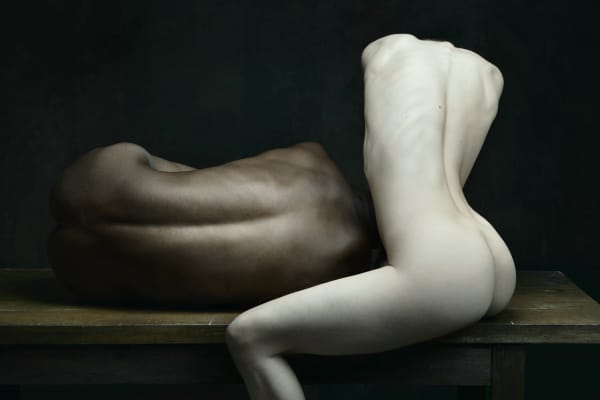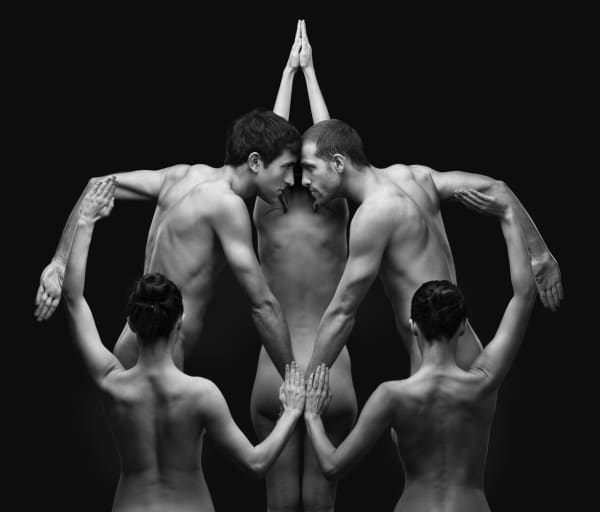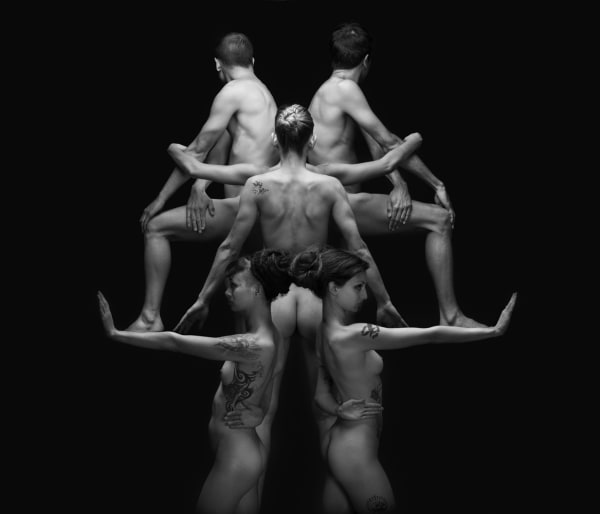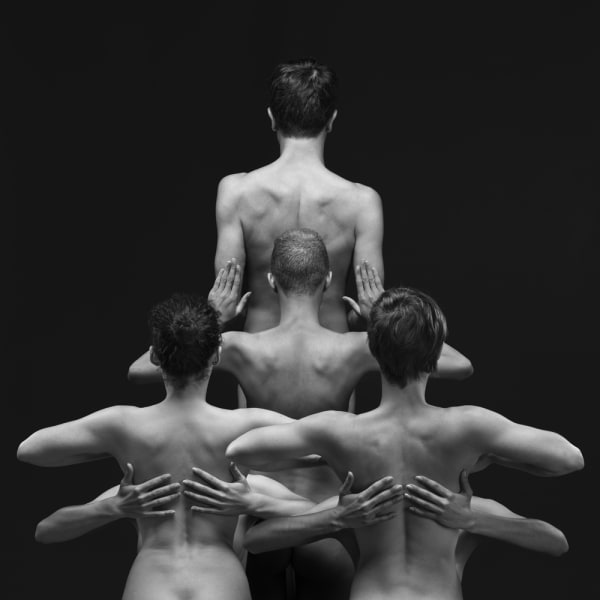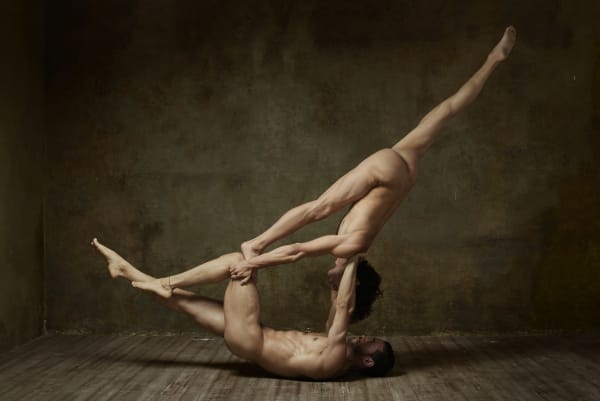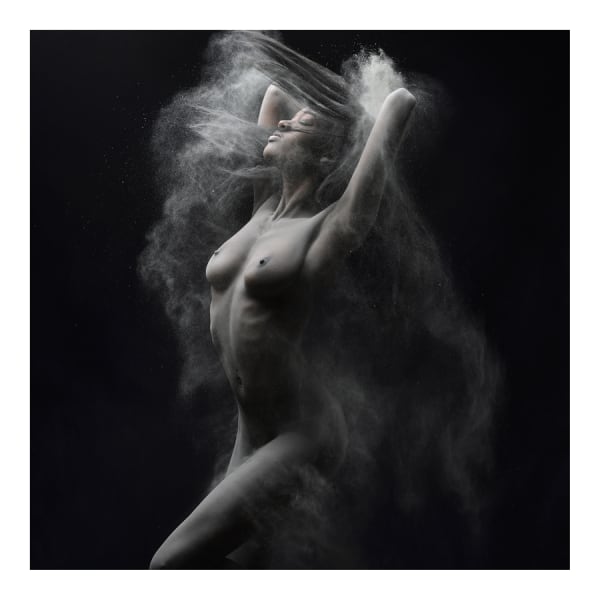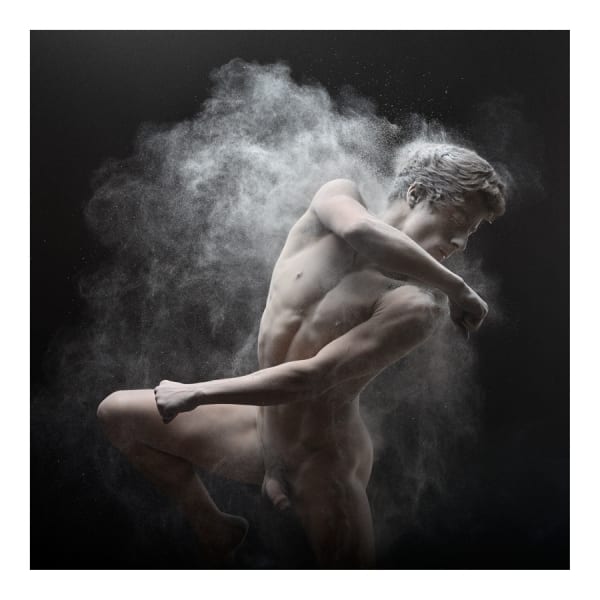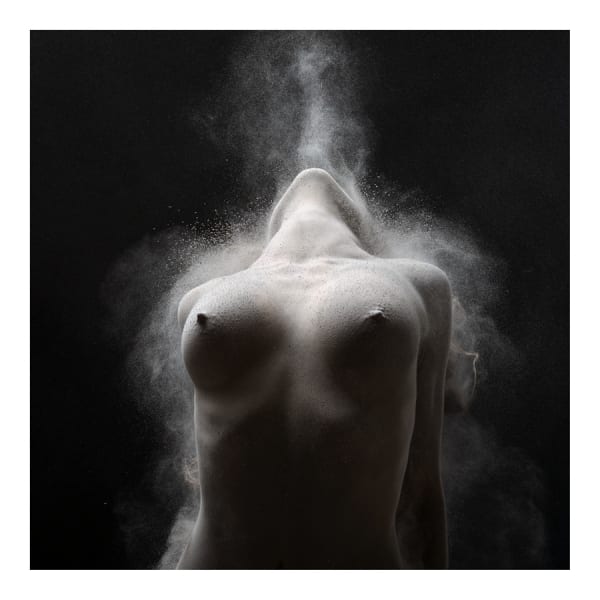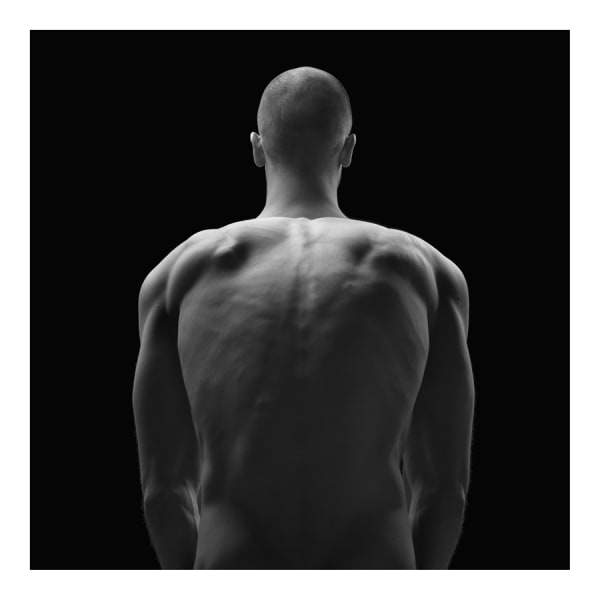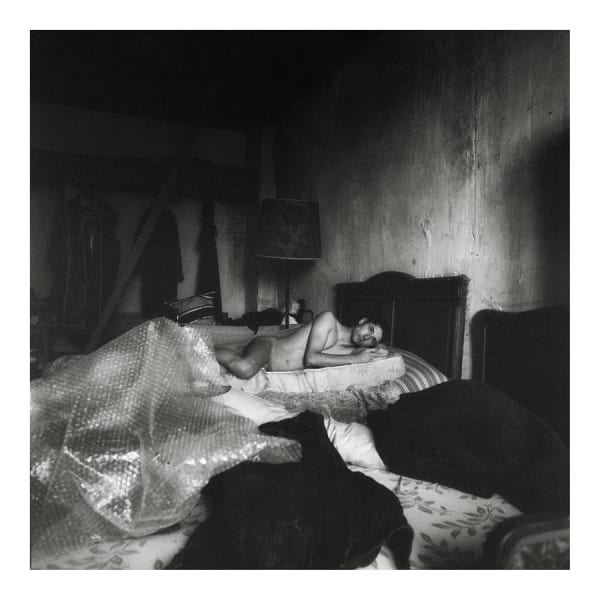Olivier Valsecchi
Hasselblad Masters winner, Olivier Valsecchi uses photography as a medium to incarnate the emotions of his psyché. Directing nude models like a conductor, he orchestrates perfect fantasmagorical images where bodies, outlined in dramatic chiaroscuro, are deprived of gender or identity to be merely used as elements of a narrative.
Olivier Valsecchi initially studied music as a teenager. As he began creating cover art for his record sleeves, he became passionate and engrossed by photography. He then spent the next ten years taking portraits for his own enjoyment and mastering his skills upon entering the ETPA photography school to perfect his technical skills. His work is dark and mysterious, oozing the magic of nature, and uniquely represents the peculiar cycle of birth, death, and rebirth. As a way to translate his emotions, Valsecchi doesn't magnify one's body but rather, uses it as an empty vessel to channel his own subconsciousness, therefore compose pictures that he qualifies as self-portraits, although he doesn’t necessarily physically appear on the photos. He finds his whole working system, from visualizing a certain image to capturing the moment, to be based on his personal instinct. With his striking black and white images and almost statuesque models, Valsecchi’s work truly brings beauty and character to aspects of life that are rarely thought of as alluring.
-
 Olivier ValsecchiBlackdust #01, 2022
Olivier ValsecchiBlackdust #01, 2022 -
 Olivier ValsecchiBlackdust #02, 2022
Olivier ValsecchiBlackdust #02, 2022 -
 Olivier ValsecchiBlackdust #03, 2022
Olivier ValsecchiBlackdust #03, 2022 -
 Olivier ValsecchiBlackdust #04, 2022
Olivier ValsecchiBlackdust #04, 2022 -
 Olivier ValsecchiBlackdust #05, 2022
Olivier ValsecchiBlackdust #05, 2022 -
 Olivier ValsecchiBlackdust #06, 2022
Olivier ValsecchiBlackdust #06, 2022 -
 Olivier ValsecchiBlackdust #07, 2022
Olivier ValsecchiBlackdust #07, 2022 -
 Olivier ValsecchiBlackdust #08, 2022
Olivier ValsecchiBlackdust #08, 2022 -
 Olivier ValsecchiBlackdust #08, 2022
Olivier ValsecchiBlackdust #08, 2022 -
 Olivier ValsecchiBlackdust #09, 2022
Olivier ValsecchiBlackdust #09, 2022 -
 Olivier ValsecchiBlackdust #10, 2022
Olivier ValsecchiBlackdust #10, 2022 -
 Olivier ValsecchiDust - Elliot, 2009
Olivier ValsecchiDust - Elliot, 2009 -
 Olivier ValsecchiDust - La Noyade, 2009
Olivier ValsecchiDust - La Noyade, 2009 -
 Olivier ValsecchiDust 02, 2009
Olivier ValsecchiDust 02, 2009 -
 Olivier ValsecchiDust 08, 2009
Olivier ValsecchiDust 08, 2009 -
 Olivier ValsecchiDust 09, 2009
Olivier ValsecchiDust 09, 2009 -
 Olivier ValsecchiDust 11, 2009
Olivier ValsecchiDust 11, 2009 -
 Olivier ValsecchiDust 12, 2009
Olivier ValsecchiDust 12, 2009 -
 Olivier ValsecchiEquilibrium IX, 2021
Olivier ValsecchiEquilibrium IX, 2021 -
 Olivier ValsecchiEquilibrium X, 2021
Olivier ValsecchiEquilibrium X, 2021 -
 Olivier ValsecchiCassandre #1, 2023
Olivier ValsecchiCassandre #1, 2023 -
 Olivier ValsecchiCassandre #4, 2023
Olivier ValsecchiCassandre #4, 2023 -
 Olivier ValsecchiSwimming Pool, 2023
Olivier ValsecchiSwimming Pool, 2023 -
 Olivier ValsecchiChloé, Stark Naked, Sunset Edition, 2023
Olivier ValsecchiChloé, Stark Naked, Sunset Edition, 2023 -
 Olivier ValsecchiAden, 2021
Olivier ValsecchiAden, 2021 -
 Olivier ValsecchiCéline, 2021
Olivier ValsecchiCéline, 2021 -
 Olivier ValsecchiCéline II, 2021
Olivier ValsecchiCéline II, 2021 -
 Olivier ValsecchiRamzi, 2021
Olivier ValsecchiRamzi, 2021 -
 Olivier ValsecchiRamzi II, 2021
Olivier ValsecchiRamzi II, 2021 -
 Olivier ValsecchiTapes #2, 2019
Olivier ValsecchiTapes #2, 2019 -
 Olivier ValsecchiMantra of Light 02, 2013
Olivier ValsecchiMantra of Light 02, 2013 -
 Olivier ValsecchiTime of War 22, 2013
Olivier ValsecchiTime of War 22, 2013 -
 Olivier ValsecchiTime of War 23, 2013
Olivier ValsecchiTime of War 23, 2013 -
 Olivier ValsecchiEquilibrium, 2018
Olivier ValsecchiEquilibrium, 2018 -
 Olivier ValsecchiEquilibrium II, 2019
Olivier ValsecchiEquilibrium II, 2019 -
 Olivier ValsecchiEquilibrium III, 2020
Olivier ValsecchiEquilibrium III, 2020 -
 Olivier ValsecchiEquilibrium IV, 2020
Olivier ValsecchiEquilibrium IV, 2020 -
 Olivier ValsecchiEquilibrium V, 2020
Olivier ValsecchiEquilibrium V, 2020 -
 Olivier ValsecchiEquilibrium VI, 2020
Olivier ValsecchiEquilibrium VI, 2020 -
 Olivier ValsecchiEquilibrium VII, 2021
Olivier ValsecchiEquilibrium VII, 2021 -
 Olivier ValsecchiEquilibrium VIII, 2021
Olivier ValsecchiEquilibrium VIII, 2021 -
 Olivier ValsecchiChloé, Stark Naked II, 2021
Olivier ValsecchiChloé, Stark Naked II, 2021 -
 Olivier ValsecchiStark Naked I, 2019
Olivier ValsecchiStark Naked I, 2019 -
 Olivier ValsecchiStark Naked Izaak, 2020
Olivier ValsecchiStark Naked Izaak, 2020 -
 Olivier ValsecchiStark Naked Paul, 2019
Olivier ValsecchiStark Naked Paul, 2019 -
 Olivier ValsecchiSwan III, 2020
Olivier ValsecchiSwan III, 2020 -
 Olivier ValsecchiSaint Pierre 1, 2019
Olivier ValsecchiSaint Pierre 1, 2019 -
 Olivier ValsecchiSaint Pierre 3, 2019
Olivier ValsecchiSaint Pierre 3, 2019 -
 Olivier ValsecchiSiren, 2019
Olivier ValsecchiSiren, 2019 -
 Olivier ValsecchiAmazon Anthony, 2016
Olivier ValsecchiAmazon Anthony, 2016 -
 Olivier ValsecchiAmazon Contemplation, 2016
Olivier ValsecchiAmazon Contemplation, 2016 -
 Olivier ValsecchiAmazon David, 2016
Olivier ValsecchiAmazon David, 2016 -
 Olivier ValsecchiAmazon Léna, 2016
Olivier ValsecchiAmazon Léna, 2016 -
 Olivier ValsecchiAmazon Lucy, 2016
Olivier ValsecchiAmazon Lucy, 2016 -
 Olivier ValsecchiAmazon Marco, 2016
Olivier ValsecchiAmazon Marco, 2016 -
 Olivier ValsecchiAmazon Mika, 2016
Olivier ValsecchiAmazon Mika, 2016 -
 Olivier ValsecchiAmazon Nabila, 2016
Olivier ValsecchiAmazon Nabila, 2016 -
 Olivier ValsecchiAmazon Sonyna, 2016
Olivier ValsecchiAmazon Sonyna, 2016 -
 Olivier ValsecchiAmazon Swann, 2016
Olivier ValsecchiAmazon Swann, 2016 -
 Olivier ValsecchiBlooming, 2014
Olivier ValsecchiBlooming, 2014 -
 Olivier ValsecchiBoy with a grudge, 2014
Olivier ValsecchiBoy with a grudge, 2014 -
 Olivier ValsecchiDrifting, 2014
Olivier ValsecchiDrifting, 2014 -
 Olivier ValsecchiHome, 2014
Olivier ValsecchiHome, 2014 -
 Olivier ValsecchiIris Vanitas, 2014
Olivier ValsecchiIris Vanitas, 2014 -
 Olivier ValsecchiNevermore, 2014
Olivier ValsecchiNevermore, 2014 -
 Olivier ValsecchiRequiem, 2014
Olivier ValsecchiRequiem, 2014 -
 Olivier ValsecchiShifting, 2019
Olivier ValsecchiShifting, 2019 -
 Olivier ValsecchiSolange, 2014
Olivier ValsecchiSolange, 2014 -
 Olivier ValsecchiTime of War 1, 2013
Olivier ValsecchiTime of War 1, 2013 -
 Olivier ValsecchiTime of War 10, 2013
Olivier ValsecchiTime of War 10, 2013 -
 Olivier ValsecchiTime of War 12, 2013
Olivier ValsecchiTime of War 12, 2013 -
 Olivier ValsecchiTime of War 13, 2013
Olivier ValsecchiTime of War 13, 2013 -
 Olivier ValsecchiTime of War 14, 2013
Olivier ValsecchiTime of War 14, 2013 -
 Olivier ValsecchiTime of War 16, 2013
Olivier ValsecchiTime of War 16, 2013 -
 Olivier ValsecchiTime of War 2, 2013
Olivier ValsecchiTime of War 2, 2013 -
 Olivier ValsecchiTime of War 3, 2013
Olivier ValsecchiTime of War 3, 2013 -
 Olivier ValsecchiTime of War 4, 2013
Olivier ValsecchiTime of War 4, 2013 -
 Olivier ValsecchiTime of War 5, 2013
Olivier ValsecchiTime of War 5, 2013 -
 Olivier ValsecchiTime of War 6, 2013
Olivier ValsecchiTime of War 6, 2013 -
 Olivier ValsecchiTime of War 7, 2013
Olivier ValsecchiTime of War 7, 2013 -
 Olivier ValsecchiTime of War 8, 2013
Olivier ValsecchiTime of War 8, 2013 -
 Olivier ValsecchiTime of War 9, 2013
Olivier ValsecchiTime of War 9, 2013 -
 Olivier ValsecchiTremor, 2014
Olivier ValsecchiTremor, 2014 -
 Olivier ValsecchiUnravel, 2014
Olivier ValsecchiUnravel, 2014 -
 Olivier ValsecchiVenus II, 2012
Olivier ValsecchiVenus II, 2012 -
 Olivier ValsecchiVenus III, 2012
Olivier ValsecchiVenus III, 2012 -
 Olivier ValsecchiVenuses, 2014
Olivier ValsecchiVenuses, 2014 -
 Olivier ValsecchiWoebegone, 2019
Olivier ValsecchiWoebegone, 2019 -
 Olivier ValsecchiAlien, 2012
Olivier ValsecchiAlien, 2012 -
 Olivier ValsecchiEagle, 2012
Olivier ValsecchiEagle, 2012 -
 Olivier ValsecchiMinotaur, 2012
Olivier ValsecchiMinotaur, 2012 -
 Olivier ValsecchiMana II, 2012
Olivier ValsecchiMana II, 2012 -
 Olivier ValsecchiMana, 2012
Olivier ValsecchiMana, 2012 -
 Olivier ValsecchiLotus, 2012
Olivier ValsecchiLotus, 2012 -
 Olivier ValsecchiKing, 2012
Olivier ValsecchiKing, 2012 -
 Olivier ValsecchiThe Dress, 2012
Olivier ValsecchiThe Dress, 2012
KLECKSOGRAPHY
Revealed to the public eye in 2010 by DUST, this series earned him the prestigious Hasselblad Masters Award two years later. He was then asked to conceive a new series on the theme : "Evoke". Hence the birth of Klecksography, organic sculptures created by symmetrically articulated bodies. Valsecchi's inspiration for this series is drawn from the works of Swiss Psychiatrist Rorschach, whose method implied using imagery created by inkstains on a piece of paper then folded into two. Where the latter used their interpretation by patients to diagnose schizophrenia or dementia, Valsecchi 's approach is the opposite.
The one he calls his interior foe - this dark side in each one of us which we try to constantly restrain - is given full freedom of expression, and the ability to overcome bodily constraints. During two months, in a derelict hangar beating to the tribal rhythms of Kate Bush'es album "the Dreaming", he pushes himself and his models over the brink of exhaustion, reaching out for total burnout. At that climactic point, the mind disincarnates itself from the body, leaving behind a mechanical flesh and bone entity, bereaved of any willpower: except that of the photographer's dictates, or , rather, those of his subconsciousness.
TIME OF WAR
Incarnation remains the main theme in Valsecchi's oeuvre. Thus he decided to dive into his DUST series once again, whilst adding a parameter to it: a soul of their own. Deliberately choosing to set the second part of his "I AM DUST" saga in a former arms factory, this autobiographic project is on the theme of incarnation and Samsara. Whereas the first part illustrated the photographer's cosmology, TIME OF WAR liberates those chaos-spawned creatures. The title, inspired by the Prado Museum's 2008 Exhibition : GOYA in Times of War, which commemorated the War of Independance, equally portrays this crying-out for emancipation. From then on, Characters have a history, and are out to conquer. Their bodies tense, each mote of muscle tissue contracts itself, shoulders heave. The primeaval ash, this very element which has transiently crossed through the cycles of life and death, seems to burst out in an explosion of effort, unless this be the final agonizing breath of these Ovidian heroes. This is about survival.
DRIFTING
Olivier Valsecchi's new Drifting series is a journey through art history where each picture merges the tradition of the reclining nude with the still life painting genre from Flanders. Faithfully devoted to his chiaroscuro approach of light, straightforward sense of composition and muted colour schemes, Valsecchi replaces baroque floral arrangements and the overlapping motif of Memento Mori by pale bodies, in order to create what he calls a Flesh Vanitas. His taste for eerie atmospheres draws the viewer into paradoxical tableaux where flowing movement and dumb stillness mysteriously interact.
From Korea to New York, his work never ceases to arouse the interest of the international press (Réponses Photo, FR; Le Figaro Beaux-Arts, FR; Le Monde, FR; Orlando Weekly, US; Santa Fe Art Magazine, BR; Eyemazing, ND; Zoom, IT; Rooms, UK; Blink, KR; Arte Fotografico, ES; Image in Progress, IT; Profifoto, DE; etc.) as much as that of curators (Promenades Photographiques de Vendôme, Festival Européen de la Photographie de Nu en Arles, Fotofever Paris and Brussels, Centre Atlantique de la Photographie in Brest).
-

Ostend International Photobiennal, BE
Olivier Valsecchi July 2023The second edition of the International Photobiennial Ostend highlights contemporary and conceptual photographic works in various indoor and outdoor locations. A trail of surprising works...Read more -

Equilibrium VIII
Olivier Valsecchi July 2021With this new release, Olivier Valsecchi adds an extra mile to his series Equilibrium with the addition of a second character. Is he a symbolic...Read more
-

Winter Exhibition
Group Show 18 Dec 2024 - 1 Feb 2025This winter, we invite you to immerse yourself in a captivating collective photography exhibition that celebrates the diverse creative visions of 14 of our artists. Each artist brings a unique...Read more -

Blackdust
Olivier Valsecchi 20 Oct - 27 Nov 2022‘Blackdust’ is a three year long project by French artist Olivier Valsecchi and the final chapter of his Dust saga.Read more
Reinvestigating the theme of incarnation and life cycles, Blackdust highlights the artist's photographic mastery through near-to monochromatic images. -

Equilibrium
Olivier Valsecchi 11 May - 13 Jun 2021From May 11th until June 13th, 2021, Echo Fine Arts is pleased to present 'Equilibrium' by French artist Olivier Valsecchi (b. 1979). Featuring the eponymous series for the first time,...Read more
-
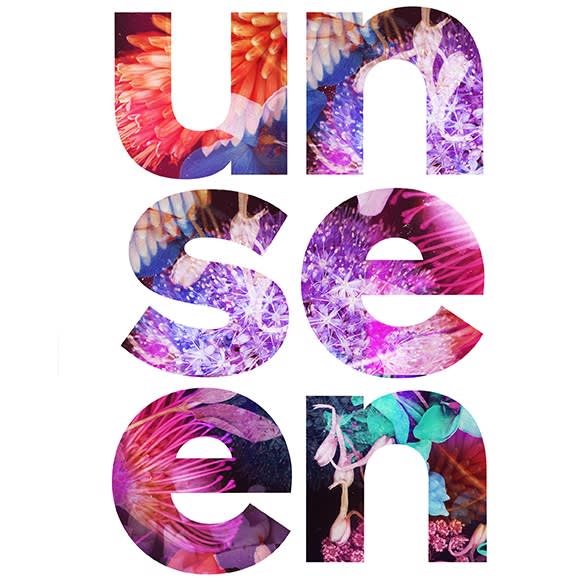
Unseen Amsterdam
15 - 18 Sep 2022We are thrilled to announce our participation to Amsterdam for Unseen Amsterdam from Wednesday 15th until Sunday, September, 18th. We will be premiere Olivier Valsecchi's...Read more -
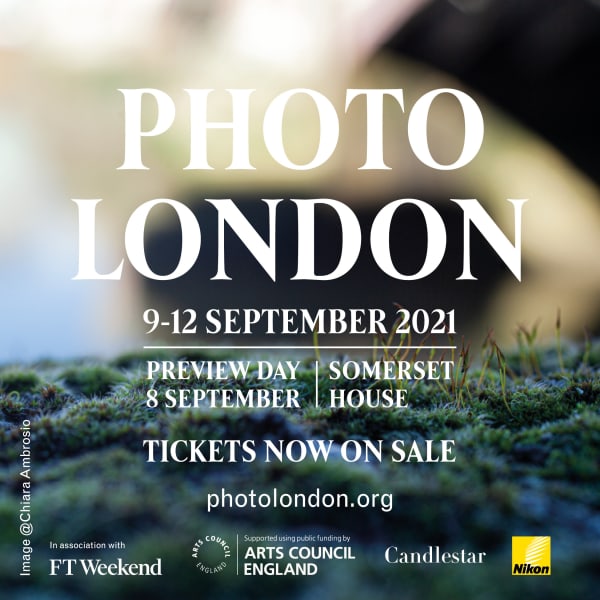
Photo London 21
9 - 12 Sep 2021We are delighted to exhibit at Somerset House for Photo London, from 8–12 September. We present a curated selection of photographs by Albert Watson, Marc...Read more

